Do you have a question about the Panasonic NR-B32SW2 and is the answer not in the manual?
Recycle packaging safely and keep out of children's reach.
Dispose of WEEE at designated points; follow local regulations for non-EU countries.
Remove plug, cut lead, secure appliance to prevent child access before disposal.
Explains safety symbols and guides on electrical safety, plug handling, and fuse replacement.
Precautions for adaptors, mains lead handling, and preventing overheating.
Avoid dampness, flammable substances, explosive fumes, and store products safely.
Prohibits mechanical defrosting, internal appliances, and self-repair to avoid damage.
Ensures proper socket use, ventilation, and safe cleaning procedures.
Keep ventilation clear; avoid viewing LED products directly with optical instruments.
Advice on handling frozen items, door operation, and avoiding finger pinch points.
Provides appliance dimensions and instructions for removing packaging and tape.
Guidance on ventilation, temperature, and leveling for optimal operation.
Info on swapping door hinges; advise professional service.
Attaching guides and initial cleaning after installation.
Steps for connecting the plug and initial startup display indications.
Details climate classifications and permitted ambient temperatures for efficiency.
Advice on location, shelf arrangement, door usage, and ventilation for energy efficiency.
Lists and illustrates shelves, drawers, and compartments within the fridge.
Explains chill compartment temperature and usage for preserving food freshness.
Lists and illustrates drawers and trays within the freezer section.
Details specific parts and provides important usage notes.
Describes fridge/freezer temperature displays and function indicators.
Identifies buttons for fridge, freezer selection, and mode selection.
Explains how the microprocessor controls temperature based on various factors.
Step-by-step guide to set the desired temperature for the fridge compartment.
Step-by-step guide to set the desired temperature for the freezer compartment.
How to adjust chill compartment temperature via sliding part for different uses.
Enables rapid freezer cooling to freeze fresh foods quickly.
Allows quick cooling of food/drinks and rapid cooling of large food amounts.
Operates fridge/freezer economically, automatically setting temperatures.
Sets fridge to 8°C and freezer to -18°C for periods of prolonged disuse.
Cools drinks quickly in freezer with optional timer function.
Turns off display backlight to save energy while retaining settings.
Prevents children from changing settings by locking control panel buttons.
Details alert situations like mode ending or door ajar and their alarms.
Instructions on filling ice tray, freezing, and removing ice cubes.
Steps for removing fridge shelves, crispers, door, and bottle shelves.
Instructions for removing freezer drawers and chill compartment drawer.
Wipe regularly with dry cloth, paying attention to door opening seal.
Lists fridge and freezer parts that can be washed with water.
Guidance on cleaning the delicate control panel and refrigerator exterior.
Lists unsuitable cleaning agents like abrasive cleaners, solvents, and alkaline detergents.
Checks for mains lead, plug heat, socket connection; consult service for damage.
For long storage: unplug, clean, leave doors open to dry and prevent odour.
Instructions for moving appliance, requiring two people and securing doors.
Explains error codes (Sr, LF, LC, HC, LOPO) and their details and countermeasures.
Addresses common sounds like compressor shutdown, air flow, and whining.
Explains loud compressor noise and extended running times due to packing or room temperature.
Explains condensation formation and why the exterior may feel hot.
Troubleshooting for non-responsive controls, alarms, and LED light issues.
Addresses problems with the fridge/freezer not chilling or freezing satisfactorily.
Explains temp differences and food freezing in the fridge.
Troubleshooting condensation, hard-to-open doors, and internal odours.
Details model, energy efficiency, volumes, dimensions, weight, and electrical ratings.
Explains energy consumption based on test results and actual usage.
| Door hinge | - |
|---|---|
| Product color | White |
| Built-in display | LCD |
| Reversible doors | Yes |
| Door opening angle | 120 ° |
| Appliance placement | Freestanding |
| Noise level | 42 dB |
| Climate class | T |
| Total net capacity | 324 L |
| Total gross capacity | - L |
| Fridge net capacity | 252 L |
| Number of vegetable drawers | 3 |
| Fridge number of shelves/baskets | 4 |
| Connected load | - W |
| Annual energy consumption | 250 kWh |
| Freezer position | Bottom-placed |
| Freezing capacity | 12 kg/24h |
| Freezer net capacity | 72 L |
| Depth | 650 mm |
|---|---|
| Width | 600 mm |
| Height | 2040 mm |


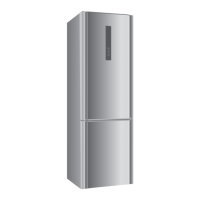


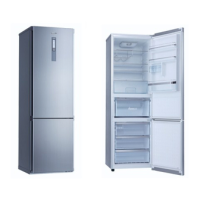
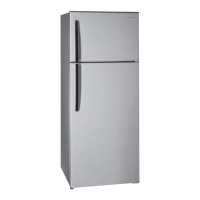
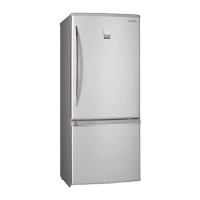

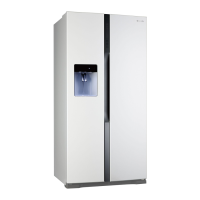


